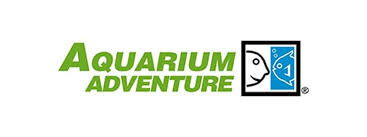Aquarium Maintenance
Cleaning the aquarium can be easy and efficient with the right equipment. In most cases, aquariums will not need to be entirely emptied to be cleaned. That's because colonies of beneficial bacteria build up over time; this bacteria is necessary for the elimination of fish waste. Therefore, it isn't necessary to remove the fish, as this can cause them stress and injury. Before getting started, gather together the following products:
- Algae pad or algae scraper
- Buckets
- Water conditioner
- Gravel cleaner/water siphon
Step 1: Clean Inside Glass
The first step is to clean the inside of the glass using an algae pad or scraper purchased from a fish store. It's tempting to buy a similar pad from a discount store, but those pads can contain a harmful chemical residue that may be fatal to fish.
Step 2: Clean Decorations, Rocks, and Objects
Remove any objects containing a buildup of algae or debris. These should never be cleaned with soap or detergent, which can be lethal to fish. The algae scrubber pad will usually be effective, but sometimes elbow grease alone isn't enough. In this case, these items can be soaked in a 10% bleach solution for 15 minutes, and then scrubbed again. After bleaching, objects should be rinsed under running water and then put in a bucket of water with an aquarium water conditioner (dechlor) till there is no chlorine smell detected.
Step 3: Clean Gravel and Partial Water Exchange
While those objects dry, a gravel cleaner/siphon should be used to thoroughly vacuum all debris from the bottom gravel substrate. This procedure also allows for a partial water exchange, the most important part of any aquarium maintenance. Taking out old water that has been depleted of essential nutrients that fish and plants need and replacing with new water increases fish health (their immune ability), fish feeding response and fish growth. Best practices are about a 30% water exchange should be done (no more than 30%) every two weeks.
Step 4: Clean Filter
Filter media (which can consist of one or all), include biomedia, sponge, floss, carbon, etc. These materials work together to provide mechanical, chemical and biological filtration (what removes fish waste).The most important function here is biological filtration which depends on beneficial bacteria to “live” on all of the filter media. Consequently we do not want to disturb (kill off) this bacteria.
At times the media may become a bit clogged (water movement through the filter slows down) so all that is necessary here, is to squeeze/rinse the media (biomedia, sponge, floss, carbon, etc.) in the discarded aquarium water (from the partial water change that was just performed), to dislodge any material clogging the media. Take care to NEVER clean the filter media in chlorinated tap water, as the chlorine in the tap water which makes it safe for us to drink, will kill off the beneficial bacteria and thus create an UNSAFE environment for the aquarium fish.
Step 5: Clean Outside Glass
Now it's time to clean the outside of the tank, including the glass, hood, light, and top. Again, household cleaners can be dangerous to fish, so only use plain tap water to wipe down these parts.
